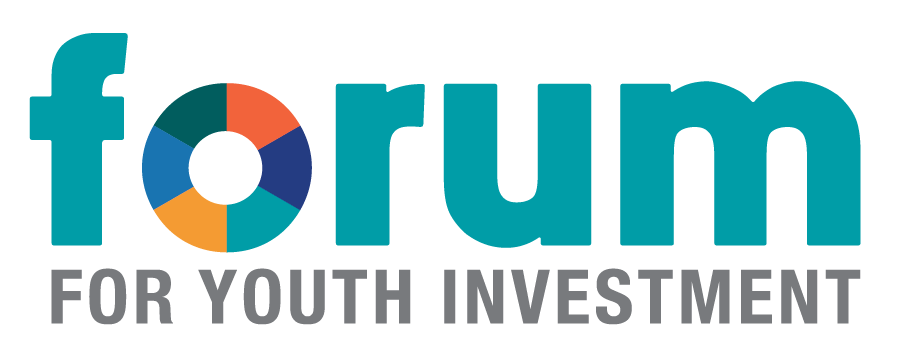Understanding Broadband and Equity for Young People
June 8, 2022
On May 13, the Biden-Harris administration announced its Internet for All initiative, enacted as part of the Bipartisan Infrastructure Law passed in response to the global pandemic. The initiative will invest $45 billion to bring high-speed internet access to more people. This includes the creation of an Affordable Connectivity Program to give families discounted access to broadband, and $1.5 billion in funds to states for digital equity.
How will this impact young people? The Forum’s latest Elevating Insights primer examines the impact that inequitable access to high-speed internet has on young people and families. It is designed to help policymakers, youth development providers, and advocates understand the issue so they can advocate for effective policy change and implementation.
The COVID-19 pandemic showed us all in stark terms that digital inequity harms young people and families. It also revealed, to anyone looking, the distinct differences that urban and rural communities face when it comes to accessing the fast and reliable broadband that is increasingly necessary for learning, work, and life.
What is Broadband? Broadband refers to the thousands of digital messages and data traveling through a physically wired, high-speed cable that connects a user to the internet. If traveling from Point A to Point B, broadband is simultaneously the road and the car.
The speed at which broadband travels from data centers, servers, cables, and eventually to a household router is measured in megabits per second (MBPS). The Federal Communications Commission (FCC) defines 25 MBPS as an acceptable speed, even though the modern standard is 100 MBPS. Across the country, speeds vary, ranging anywhere from 5 to 50 MBPS.
In rural communities, where 10 million K-12 students live, the pandemic exacerbated the challenge they have faced since the emergence of dial up: low broadband speeds.
As of 2022, 31 percent of rural communities in the United States struggle with speeds slower than the FCC’s “acceptable” rate of 25 MBPS. Families with low broadband speed don’t typically lack access to the internet—rather, they cannot fully access all its offerings. Consider this example: In Westphalia, Michigan, internet speeds average 5.3 MBPS. If a young person living in Westphalia is on a Zoom call for class while working on a Google document online, they’re effectively using all the available MBPS in their home and are likely to encounter lags that inhibit their ability to work and interact online. If three devices are operating in a home, the minimum bandwidth recommendation ranges between 50 and 300 MPBS. Thus, multiple family members using multiple devices at the same time may quickly hit their limit, forcing them to prioritize critical activities such as school, work, virtual medical care or any other virtually-dependent resources.
By the numbers, there are 9 million more families who lack broadband access in urban communities compared to rural communities. However, urban families don’t lack broadband because of inadequate infrastructure or slow speeds. Instead, they can’t afford to use it.
A 2019 PEW study found that 50 percent of the urban families who did not use broadband opted out due to its expense. In those families, 58 percent of young adults relied solely on their phone to access the internet, meaning they used free Wi-Fi or their cellular data plan. Occasionally using a mobile phone as a hotspot may initially be more affordable than paying for wired broadband, but only for short durations. Even before the pandemic, this method of accessing the internet posed challenges; with the added strain of households working and learning remotely, it is largely unsustainable.
Most Americans believe broadband should be considered a public utility that every community can access. Title II of the 2015 Federal Communications Act is a good start, but does not go far enough to make broadband more affordable by treating it as a utility and increasing its usage through targeted public outreach campaigns. Reclassifying broadband as a utility means the FCC could work to provide universal service and regulate digital red-lining. Congress could provide subsidies for low-income families, require schools to provide internet alternatives to students, fund the laying of fiber optic cables, and more. (Many of these reforms were included in the original version of the federal Build Back Better Act that stalled in Congress.)
The Biden-Harris administration’s public-private partnership to expand high-speed internet access would cut costs for nearly 48 million Americans. While this should be considered progress, more significant federal reforms are needed.
In the meantime, state and local stakeholders and advocates will continue to address inequity, including through the creation of strong advocacy toolkits (including a Digital Equity for Students Toolkit from the Consortium for School Networking or CoSN), and attempts to pass state legislation, for example, a New York bill to classify broadband as a utility.
Learn more about the issues driving broadband inequity by downloading Broadband & Youth: A Primer for Equity Advocates (PDF) from the Forum’s Knowledge Center.
###
